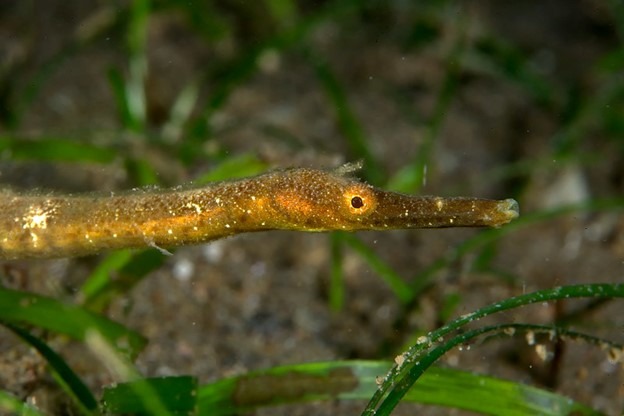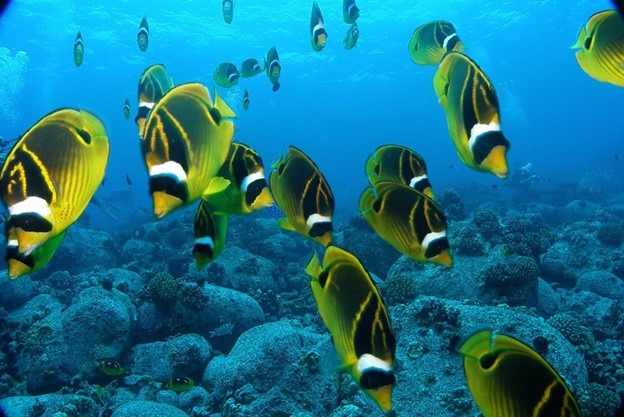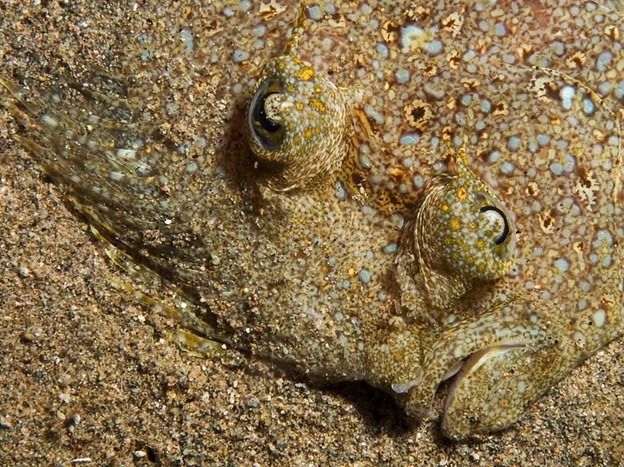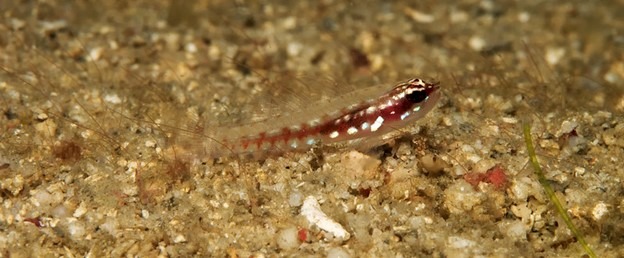I grew up with a beautiful view of the Amazon River throughout my teenage years. While my parent’s home was on the outskirts of Vienna, I had a series of aquaria, all housing a rich diversity of fishes from the Amazon River system: Tetras, catfishes, and Cichlids, and my favorites. I have particularly dear memories of the dwarf Cichlids of the genus Apistogramma which I kept. What colors! And what interesting sex differences in these fish!
Both from the body shapes as well as from the behavior it was clear to me while all of the animals in my tank were “fishes”, they belonged to radically different groups of aquatic vertebrates. Bony fishes are indeed by far the most diverse group of vertebrates. Many aquarium hobbyists are drawn, just as I was myself, to fishkeeping by the fascination with this enormous biodiversity.
A series of publications1,2 in recent years has shed more light on how the enormous diversity of bony fishes evolved. Like so many aspects of the fauna of present-day biology of Planet Earth, things radically changed when the big asteroid hit what is now Mexico and erased all the large dinosaurs. At that time (66 million years ago), after the Mesozoic period ended so violently and suddenly, modern fishes started to diversify. This is when the many of the major groups of fishes we see today started to separate from common ancestors.

The amazing diversity of bony fishes: Left, top: A weedy sea dragon, Phyllopteryx taeniolatus, a Syngnathid; an anemonefish, Amphiprion ocellaris, a Pomacentrid. Bottom: a juvenile sole, Soleichthys sp., a Soleid; a leatherjacket, Eubalichthys mosaicus, a Monacanthid. Center: a Red Indian Fish, Pataecus fronto, a Pataecidae. Right: a leopard flounder, Pseudorhombus duplicocellatus a Paralichthyd.
Is a Cichlid more closely related to a damselfish or to a seahorse? How are gobies, blennies and dragonets related? These questions have answers at the base of the bony fish family tree, and scientists have answered them more clearly only in the last few years. But how did they approach these enigmata?
How Are Fishes Related?
Figuring out the family tree of a group of animals is a multi-pronged approach these days. Fossils are of course great – if you have them. But out of countless animals which perish, only a minute fraction ends up in places which preserve their bodies as fossils for millions of future years. On top of that, hard tissue like bone is preserved much more readily than soft tissue like muscles or skin, which might be equally important in determining the relationships of an animal.
Fish biologists can also look at the morphology of living fishes – animals shaped similarly will most likely be closely related. For example, all members of the angelfishes (Pomacanthidae) have a spine on their gill cover. Such alignments of species by shared features work well for closely related species. But when comparing more distally related species, comparing body shapes can be more challenging. Similar fins, jaws or spines can be a result of close relatedness, or of evolutionary adaptation to similar ecological niches: Two groups of fishes which are not closely related but live comparable lives might end up looking similar in some respects. For example, the popular tetras & their relatives, the Characids, as well as the salmons and their relatives, the Salmonids, both possess a small adipose fin behind the main dorsal fin, even though these groups of fishes are only distantly related. The adipose fin gives the fishes a slight advantage when swimming by dispersing small eddies which would otherwise slow the fish down; both Characids as well as Salmonids have adipose fins because they swim similarly, not because they are closely related. Such cases abound in the world of fishes. Hence fish biologists started investigating the genetic material of these animals…
Determining Fish Relationships by Reading DNA
In the last decades, looking at DNA sequences has become an increasingly common technique to reconstruct evolutionary relations between groups of fishes. However, knowing the sequence of the DNA bases in the genome of a fish on its own is no miracle cure for every taxonomic confusion: the scientists need to know which stretches of DNA to compare between animals. Some stretches of genetic information, those encoding the most fundamental parts of cells, are very similar even between a fish and a mushroom. These will be useless to distinguish two different families of fishes. Other DNA sequences are significantly different between even individuals of the same species; these are the ones which are used in paternity tests. The pieces of DNA to distinguish relatedness between families and orders of fishes must be in-between.
Another complication is that scientists have to compare thousands of DNA bases, the “letters” of the genetic code, between not only pairs of species, but between multiple species. It’s no trivial matter which statistical methods to use to sort all these species into a neat family tree which is best supported by the data – both DNA analysis and the ages of fossils taken together. The understanding of how to tackle these scientific challenges has come together in recent decades. In addition, ever-improving DNA sequencing technology has made the reading of fish’ genetic information much faster and cheaper.
This is where the recent publications by Alfaro1 and Ghezelayagh2 plus colleagues come in.
The Base of the Fish Family Tree
The bony fishes are a highly diverse group of animals, with more than 18000 species. Fish species are of course grouped in families, and a great number of families are collected in a big group called the Percomorpha – the perch-like fishes. Outside of this group are important and species-rich groups, such as the catfishes and the carps & relatives. However, the perch-like fishes contain many of the species which the aquarium hobbyist, angler or scuba diver will encounter. It has long been the topic of heated arguments how the fishes within the perch-like fishes are related to each other. Quite a few fish taxonomists despaired at the perch-like fishes, calling them a “grab bag” mix of all species which are difficult to classify. This despair has now been largely resolved.
Using pieces of DNA which are highly conserved (very similar) between species, the timing of fossils, and very clever statistics, Alfaro and colleagues1, came up with the perch-like fish family tree most solidly supported by data so far. They distinguish six principal groups, or “crown groups” of perch-like fishes.
The first group are the seahorses and pipefishes, which are interestingly grouped with a few smaller families and the dragonets, such as the mandarin fish (the group is called the Syngnatharia). Grouping the dragonets, which superficially resemble gobies, with the seahorses and pipefishes is one of the many surprises which the study of fish relationships via DNA sequences brought us.

This stick pipefish, Trachyrhamphus bicoarctatus, is a seahorse relative. Staying almost motionless, the fish relies more on its camouflage than on its swimming skills. Dauin, Philippines.
The second group are the Pelagiaria, which, as the name suggests, contain pelagic fish families, such as the tuna.
The next group are the Eupercaria, the new perch-likes fishes, as the prefix “eu” implies. These contain a great number of fish families which should be well-known to the aquarium enthusiast, such as wrasses, surgeonfish, butterflyfishes, angelfishes, groupers and pufferfish. This group can be seen as the crown of perch-like fishes.

Racoon butterflyfish, Chaetodon lunula. Kona, Hawaii. There are many species of butterflyfishes, and many individuals on tropical coral reefs.
A curious mix of fish families is contained in the next crown group of the perch-like fishes, the Ovalentaria. These are the blennies, damselfishes and the Cichlids, which are of course very popular in the aquarium hobby. A fascinating small family in this group are the convict fishes (often mis-represented as convict blennies or convict gobies), a marine family. In the convict fishes, the juveniles feed on plankton, which they later regurgitate into the mouth of the eel-like, burrow-dwelling adults; a highly unusual social system in a family which is close to the Cichlids, which are equally known for their intricate reproductive and social systems. Molecular methods – investigating DNA sequences – have here grouped together fishes which bear little superficial resemblance, but which share behavioral specializations.
The barracudas, and the flounders & soles, jacks plus a few smaller families make up the next group of the perch-like fishes, the Carangaria. The majestic sailfish is also in this group – yet another grouping of fishes which look completely unlike each other, the soles and the sailfish.

A leopard flounder, Bothus pantherinus, a fish with a highly modified body shape. Dauin, Philippines.
Then, there are gobies Gobiformes, my personal favorites. As the name suggests, the gobies belong in this group, as well as the sleeper gobies and cardinalfishes. This is an incredibly species-rich group, of mostly small or very small fishes – some of the smallest vertebrates, dwarf gobies of the genus Eviota, belong into this group.

Eviota prasites, an adult less than 2 centimeters long. Compare the tiny animal to the size of the sand grains on which it rests. Bolinao, Philippines.
Now, almost all of these main groups of the perch-like fishes originated just after the asteroid-caused mass extinction which eliminated the dinosaurs and opened up ecological niches for mammals on land. Only the Gobiformes arose somewhat earlier, during the waning days of the dinosaurs, the late Cretaceous. However they remained at relatively low levels of diversity until catastrophe struck Planet Earth, and only developed their enormous species diversity then.
Alfaro writes that “divergences between anatomically and ecologically distinctive suprafamilial clades concentrated in the first 10 million years of the Cenozoic”1. In other words, the first part of the last geological era, the Cenozoic, the one we live in, was when the fishes we see now really exploded in terms of their biodiversity.
Shape as Adaptation
Establishing when the main branches of the perch-like fishes separated was highly insightful, but there is more to evolution than lineages of fishes branching off: the many thousand species of bony fishes differ widely in how their bodies look, and these body shapes are all solutions to the challenges posed by their ecological niches: The streamlined deep bodies of jacks allow them to accelerate quickly when hunting in the open water; the worm-like bodies of pipefishes allow them to crawl inconspicuously among coral rubble or seagrass; the flattened bodies of the flounders allow them to quickly disappear under the sand; and so on: each fish body shape serves its unique purpose.
So, when did this enormous diversity of fish body shapes evolve?
Ghezelayagh and colleagues2 write “The evolutionary success of spiny-rayed fishes is the culmination of multiple species-rich and phenotypically disparate lineages independently diversifying across the globe under a wide range of ecological conditions.”2. In other words, many of the groups of bony fishes became specialized during roughly the same time. This happened right after the big mass extinction which eliminated the dinosaurs and dealt new cards to the animal fauna of Planet Earth.
There is naturally still a lot left to find out about the evolution of bony fishes. But these recent studies certainly give us a good image about the big picture of how modern fish became so fascinatingly diverse.
The big family tree of all perch-like fishes, and their cousins (at the top). The main groups of perch-like fishes (color coded boxes containing fish shapes) are explained in the text. The time-scale at the bottom represents geological time, with the Mesozoic period (the age of the dinosaurs) in green, and the Cenozoic period (the modern age) in orange/yellow. At the intersection between these periods, a mass extinction occurred which opened up ecological niches for the surviving species, in the ocean and on land.
References:
- Alfaro, Michael E., Brant C. Faircloth, Richard C. Harrington, Laurie Sorenson, Matt Friedman, Christine E. Thacker, Carl H. Oliveros, David Černý, and Thomas J. Near. “Explosive diversification of marine fishes at the Cretaceous–Palaeogene boundary.” Nature Ecology & Evolution 2, no. 4 (2018): 688-696.
- Ghezelayagh, Ava, Richard C. Harrington, Edward D. Burress, Matthew A. Campbell, Janet C. Buckner, Prosanta Chakrabarty, Jessica R. Glass et al. “Prolonged morphological expansion of spiny-rayed fishes following the end-Cretaceous.” Nature Ecology & Evolution 6, no. 8 (2022): 1211-1220.



0 Comments